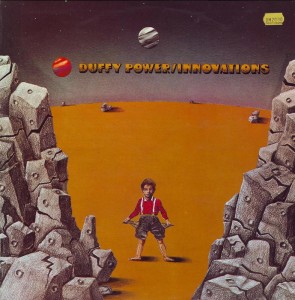
Kennt jemand dieses Poster oder das (fast) identische Plattencover?
Als das Doppel-Album im Jahr 1969 erschien, hatte das zweite Great Awakening des Blues durch weiße Musiker – dieses Mal waren es Briten – die großen Schallplattenlabels längst aufgeweckt, und mancher Pioneer der ersten Zeit war zum Superstar aufgestiegen – Gordon Smith ist das nicht gelungen.
John Peel beschrieb ihn einmal als the foremost white Blues guitarist in the world. Zudem war er einer der größten britischen Blues-Vokalisten. Von allen Stücken dieses Samplers habe ich seine Version des „Diving Duck Blues“ am allerhäufigsten gehört. Ich habe Gordon Smith über die Jahre für einen schwarzen Musiker gehalten, so authentisch klingen seine Slide Guitar und seine Vocals.
Das Debut-Album des 19-jährigen, Long Overdue (1968), ist zusammen mit zahlreichen prev. unreleased tracks auf The Complete Blue Horizon Sessions erschienen.

Als dieses Album im Jahr 1971 erschien, waren die großen Schallplattenlabels in Sachen Blues längst aufgewacht, und mancher Pioneer der ersten Zeit war zum Superstar aufgestiegen – Duffy Power ist das nicht gelungen.
Die Songs stammen aus verschiedenen Recording Sessions der Jahre 1965/66. Unter den mitwirkenden Musikern sind Jack Bruce und John McLaughlin. 1992 wurden unter dem Album-Titel Little Boy Blue die Mono-Aufnahmen auf CD wiederveröffentlicht.
Duffy Power ist in beiden Editionen recht mitteilsam.
1971:
At the time these recordings were made, there was little chance of them being released to the public on a worthwhile scale, in fact the Recording Companies turned them down on the grounds that they „couldn’t see it being of any commercial value“.
At that time, Blues music, however timeless, was progressing „underground“ and not many people knew it was there. But by public demand, more and more of the music that was once considered a rarity, is now being made available everywhere. Even so, these recordings remain unique, as they contain some highly original and personal performances that were to be the apex of many renowned musical collaborations.
1992:
Some of the deepest feelings I have of that time are of my association with the guitarist John McLaughlin. I knew instinctively that soon he would be an international star, and against his protests I told he would be on his own.
[…]
If you listen to tracks like „It’s Funny“ you will see that we were streets ahead of any other current R & B band. No wonder that by the time this album was released most of the people on it had become superstars.
These tracks are just a glimpse of some things I got up to behind the scenes back in the 1960s. I am very happy that they are being re-issued as I feel they are a unique document of the history of British R & B.